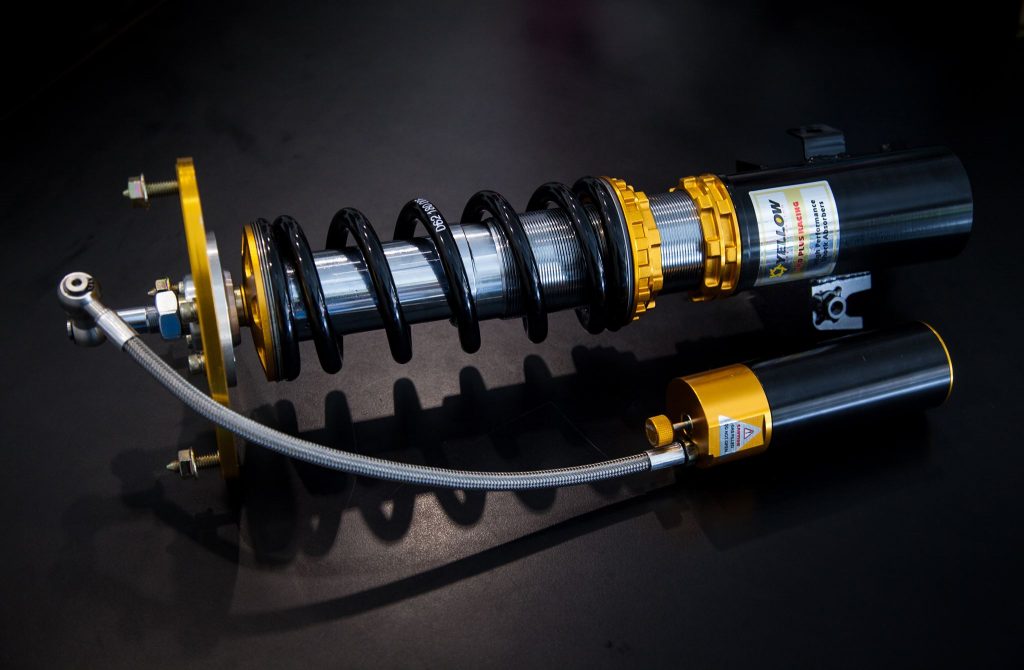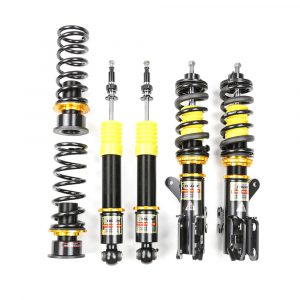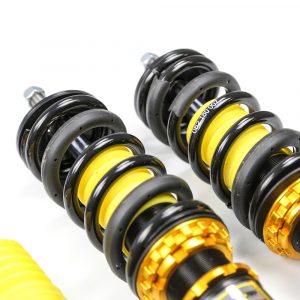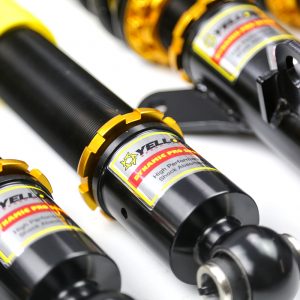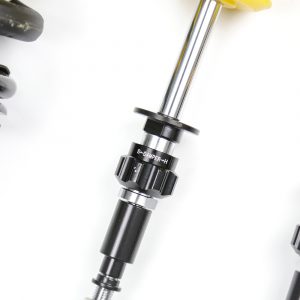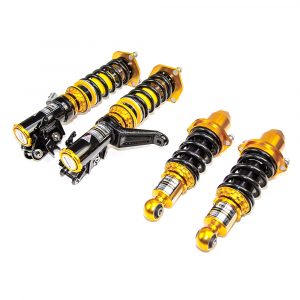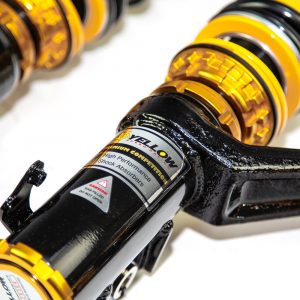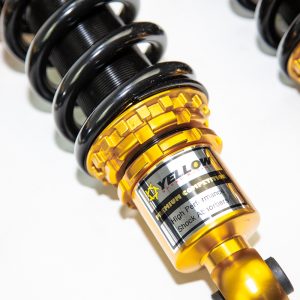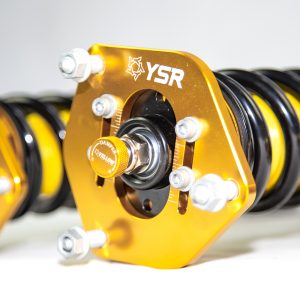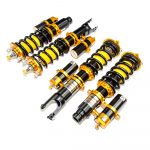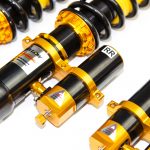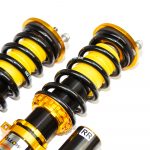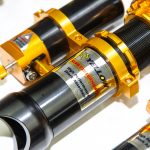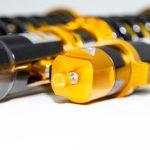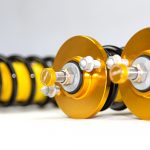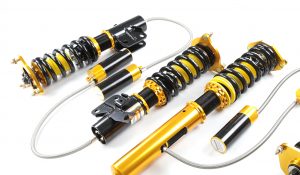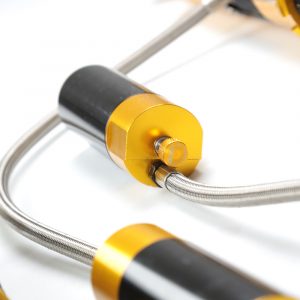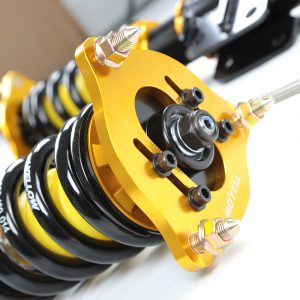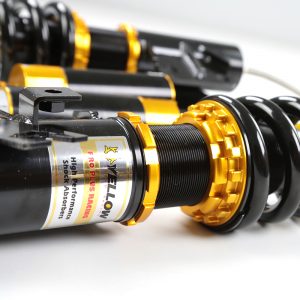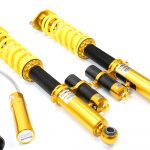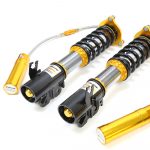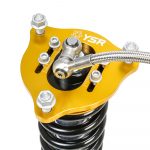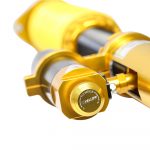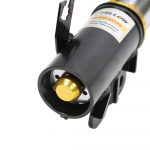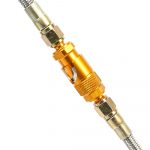What coilovers are right for me? A comprehensive guide to choosing the perfect YSR suspension upgrade!
If you’re a performance car enthusiast or even just a regular driver that enjoys seeing cars as low to the ground as possible, then you’ve probably heard of coilovers. Coilovers are a popular upgrade among many tuners because they offer superior handling, adjustability and improved performance over the stock suspension. YSR, Yellow Speed Racing, are a leading manufacturer of high-performance coilovers, synonymous in the Honda world, race proven and the first port of call for us at Tegiwa too! In this blog, we’ll guide you through the process of selecting the perfect set of Yellow Speed Racing coilovers to suit your driving style, vehicle type and budget.
Before we delve into the selection process, it’s essential to understand what coilovers are and how they differ from conventional springs and dampers. Unlike regular springs and shocks, coilovers combine both components into a single unit (depending on vehicle), which allows for independent height and damping adjustment. This adjustability plays a crucial role in tailoring the suspension setup to your specific needs.
Identify Your Goals:
The first step in choosing the right coilovers is to identify your goals. Are you looking for coilovers for your race car or do you just want to get as low as possible? It’s crucial to understand that coilovers designed for track performance might sacrifice some comfort, while those optimised for street use might not handle aggressive driving too well.
Adjustability Options:
One of the strengths of YSR coilovers lies in their extensive adjustability features, with all their coilovers having 33-way damping adjustment settings. Depending on the specific model, YSR coilovers offer adjustable ride height, damping force (bump) and rebound settings (including high and low speed compression). Advanced adjustability allows you to fine-tune your suspension to suit your driving preferences and road conditions.
Budget and Value:
While YSR coilovers are recognised for their top-tier quality and performance, they are available at various price points. It’s essential to determine a budget that aligns with your requirements and the value you seek from your suspension upgrade. YSR offers a range of coilovers designed to fit different budgets, ensuring there’s an option for every driver.
The most popular option is the YSR Dynamic Pro Sport coilover. These are designed and developed for all motoring enthusiasts that want excellent handling without sacrificing comfort. This suspension system features 33-way adjustable dampening settings and full-length height adjustment to meet every driver’s handling desires.
Pillow ball mounts and adjustable camber plates are included for front and rear on some kits to increase steering response, while aluminium upper mounts with hardened rubber bushings are used on some applications. This suspension system is ideal for daily driving and occasional track use and is the best all-rounder.
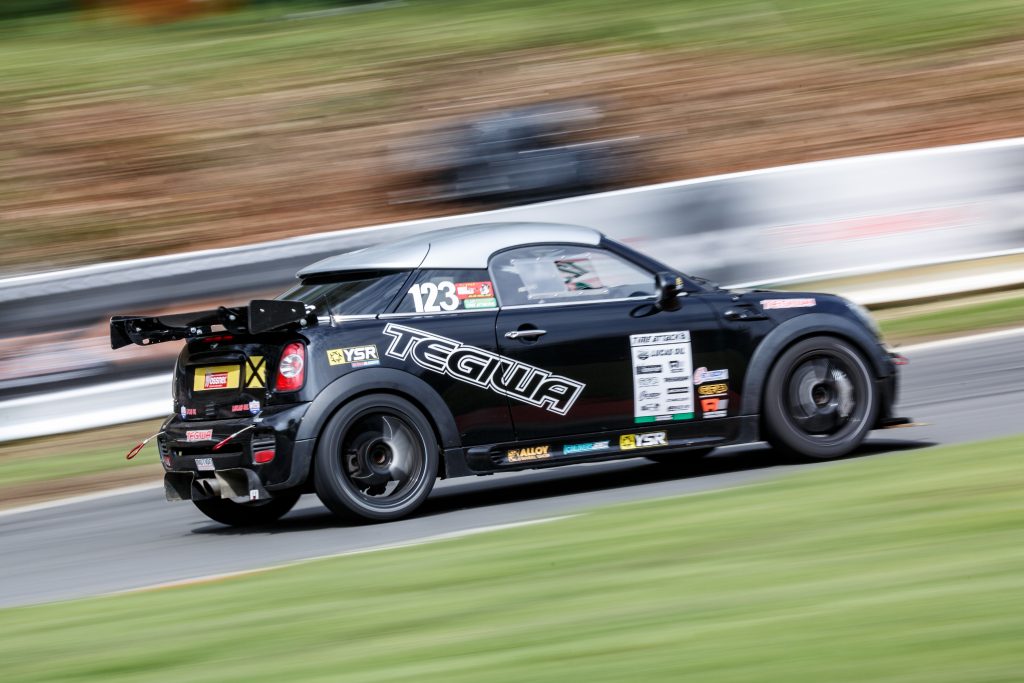
Ideal for:
- General day-to-day driving
- Light track use
- Time Attack
YSR Premium Competition coilovers are designed and developed for use in motorsport. Through years of competition and testing, Yellow Speed Racing have made uncountable improvements in setup to provide the most durable and competitive damper. Spring rates and shock valving are made for competition to make the vehicle more controlled and balanced.
This suspension system features 33-way dampening adjustment and full-length adjustment to accommodate every driver’s needs. Where possible on certain applications, the lower mounts are manufactured from lightweight alloy aluminium to reduce unsprung weight. The pillow ball top mounts are used on McPherson struts for maximum handling and performance. Many of these systems are available with inverted struts which offer superior strength.
Ideal for:
- Racing Only
Used in:
- Mandatory coilover system of the Type R Trophy
- FNduro (Club Enduro)
- Front running Civic Cup cars
- BMW Car Club Racing Championship
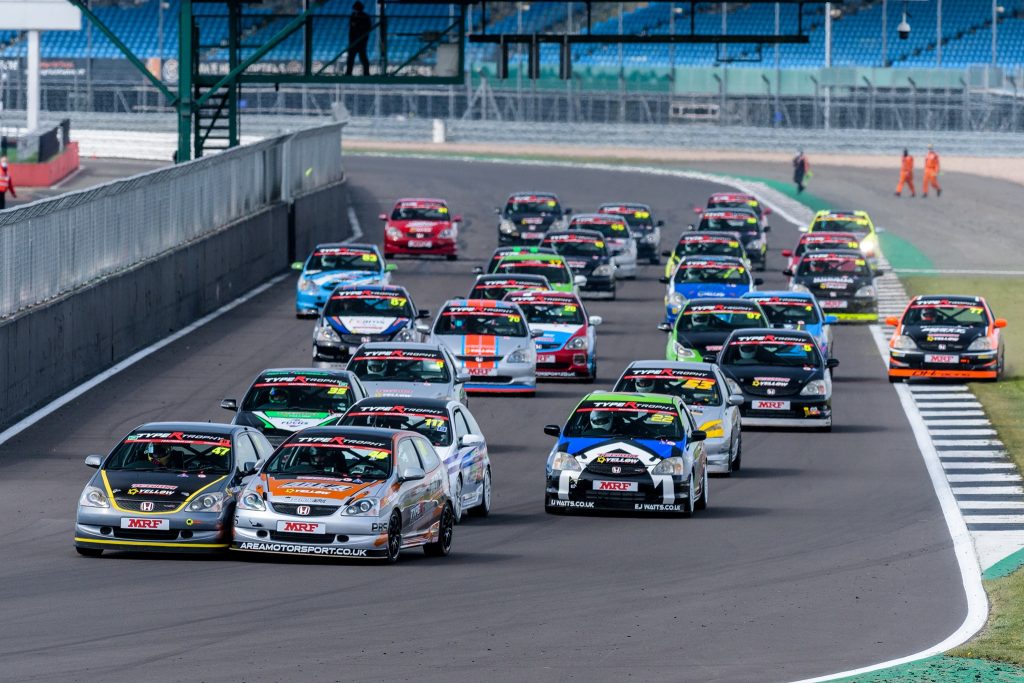
YSR Club Performance coilovers are ideal for drivers that want excellent handling on occasional track days, club racing or less aggressive road competition. They are available in both 2-way and 3-way applications. These coilovers feature a desirable adjustable damping setup for daily driving too without sacrificing ride quality and comfort. An external reservoir allows you to adjust the rebound and compression damping separately. It also allows for increased oil capacity to dissipate heat superiorly, which enables you to operate this product for long period and improves performance & handling.
The 3-way system offers independent low-speed and high-speed compression damping adjustment, featuring 50 clicks of high-speed compression, 24 clicks of low-speed compression and 33 clicks of rebound damping adjustment. Drivers can fine tune the shocks to their desired dampening rates for different road conditions.
Ideal for:
- Track Days & Daily Driving
This series represents the pinnacle of Yellow Speed Racing’s coilover offerings. Designed with professional racing in mind, these coilovers have been built after years of development, engineering, and testing in the real world.
The coilovers in this series allow for a high degree of customisation with numerous settings for rebound, compression, and ride height adjustment, allowing you to fine tune for any track. These are available in 2-way and 3-way applications, with the latter option allowing independent low-speed and high-speed compression damping, separate rebound adjustment, and full-length ride height adjustment too.
- 50 clicks of high-speed compression
- 24 clicks of low-speed compression
- 33 clocks of rebound damping adjustment
Ideal for:
- Racing Only
Used in:
- M3 Cup
- Club Enduro
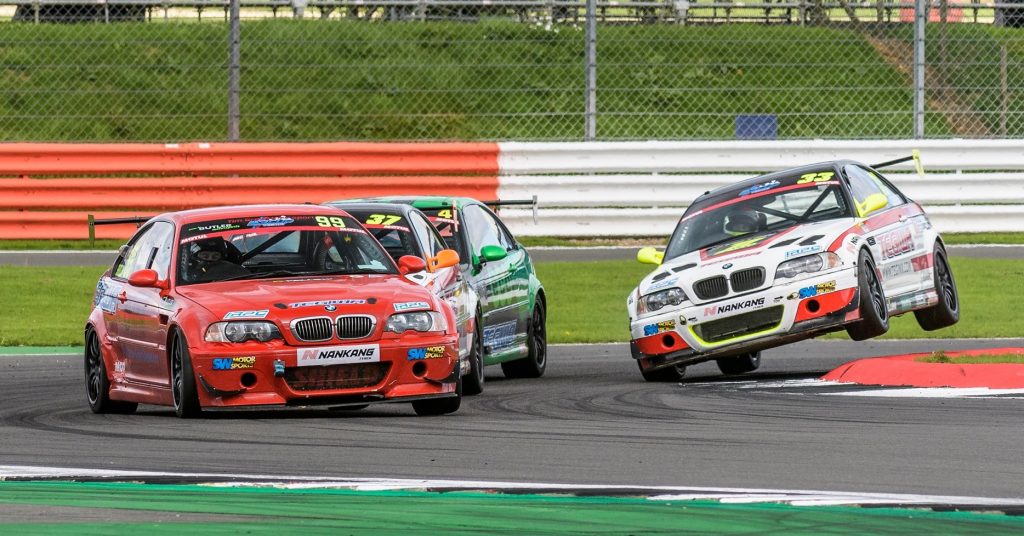
This series offers the unique ability to handle the high demands of drifting. The Drift Racing coilovers feature a robust construction to withstand the rigours of drifting and provide the driver with precise control and an array of adjustment over the vehicle’s suspension dynamics. There are many elite drifters using Yellow Speed Racing coilovers including Forrest Wang, Karolina Pilarczyk, Pauly C & Andy Frost.
Ideal for:
- Drifting
Used in:
- Formula D
- Drift Pro Championship
1-way Adjustment
In a 1-way adjustable coilover system, you can adjust the damping force in one direction, which is often referred to as “rebound damping.” Rebound damping controls how quickly the shock absorber extends after compressing, affecting the rate at which the suspension rebounds after encountering a bump or dip in the road. Adjusting rebound damping can have an impact on ride comfort, handling characteristics, and overall vehicle performance.
Softer Suspension (Reduced Stiffness):
- Improved Ride Comfort: Softening the suspension will make the ride more comfortable, especially on rough or uneven roads. The suspension will absorb and dissipate energy from bumps and imperfections in the road surface, resulting in a smoother ride.
- Increased Body Roll: A softer suspension setup can lead to increased body roll during cornering. This means that the vehicle may lean more when turning, which can affect its stability and handling.
- Reduced Tire Grip: Excessive softness can cause the tires to lose contact with the road surface more easily during hard cornering, reducing traction and potentially compromising safety.
- Extended Braking Distances: Softer suspension settings can lead to increased weight transfer to the front wheels during braking, potentially extending braking distances.
- More Comfortable for Daily Driving: Softer settings are often preferred for daily driving and commuting, as they provide a smoother and less jarring ride.
Stiffer Suspension (Increased Stiffness):
- Enhanced Handling: Stiffening the suspension can improve the vehicle’s handling characteristics. It reduces body roll during cornering, allowing for more precise and responsive steering.
- Improved Traction: A stiffer suspension setup can help keep the tires firmly planted on the road during aggressive cornering, which enhances traction and grip.
- Reduced Dive and Squat: Stiffening the suspension can reduce front-end dive during braking and rear-end squat during acceleration, contributing to a more balanced and controlled driving experience.
- Firmer Ride: A stiffer suspension will transmit more of the road’s imperfections and bumps to the occupants, resulting in a firmer and potentially less comfortable ride, especially on rough roads.
- Better for High-Performance Driving: Stiffer settings are often preferred for track days, autocross, or spirited driving, as they provide better control and stability at high speeds and during aggressive manoeuvres.
Many enthusiasts fine-tune their coilover suspension systems to strike a balance between ride comfort and performance, adjusting them based on specific driving situations or track conditions.
High Speed Compression
When talking about suspension systems and coilovers, high-speed compression refers to the suspension’s ability to absorb impacts from larger, faster bumps or irregularities on the road or track. This should not be confused with the speed at which the vehicle is moving; rather, it pertains to the speed of the suspension movement itself.
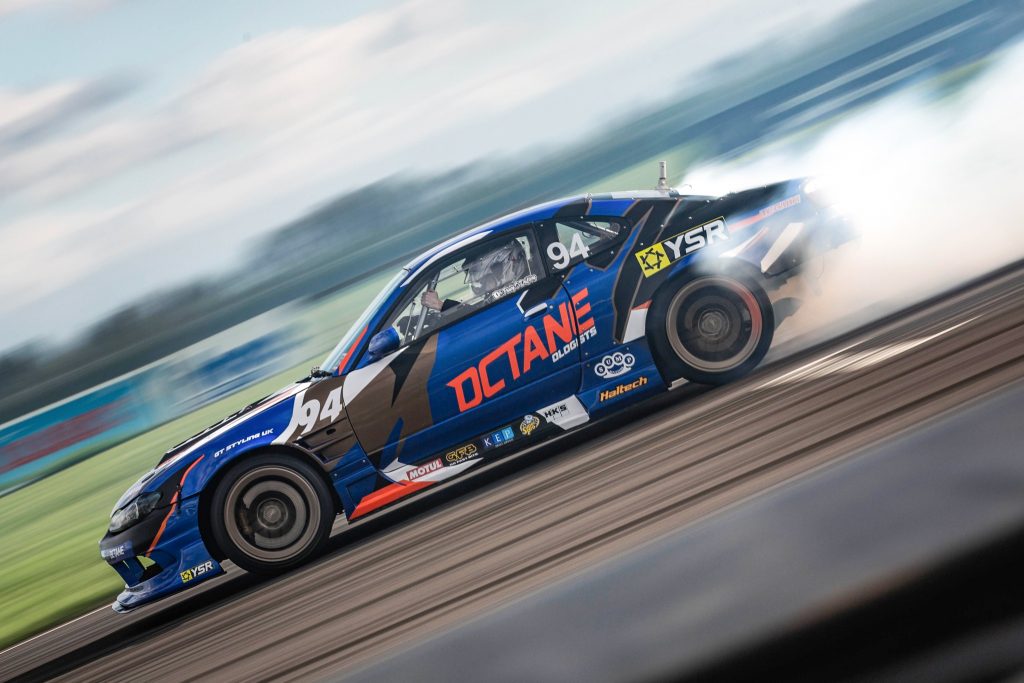
In a coilover setup, the high-speed compression is usually controlled through an adjustable damping force mechanism, which is orchestrated through a series of valves within the shock absorber. The purpose of adjusting the high-speed compression is to fine-tune how the suspension responds to rapid bumps or compressions, essentially dictating how the vehicle handles impacts such as potholes, sharp edges, and larger track irregularities.
Effects on the Car
- Improved Ride Quality: Adjusting the high-speed compression to a softer setting can help in soaking up high-speed bumps, providing a smoother ride as it allows the suspension to compress more easily.
- Enhanced Stability: A properly adjusted high-speed compression can maintain vehicle stability, especially during high-speed cornering, as it prevents excessive weight transfer and keeps the tire in better contact with the road or track surface.
- Superior Control: By increasing the high-speed compression damping force, drivers can gain more control over their vehicle as it prevents the suspension from bottoming out during high-speed impacts, which can be critical during racing or spirited driving.
- Reduced Suspension Wear: A balanced high-speed compression setting can help in reducing the wear and tear on the suspension components as it prevents the suspension from compressing too rapidly, which can cause damage over time.
- Better Handling Over Rough Surfaces: When driving over rough or uneven surfaces, a vehicle equipped with adjustable high-speed compression can be tuned to maintain better contact with the ground, improving traction and handling.
Adjustment
Increased High-Speed Compression (Stiffer Setting): This makes the suspension less likely to compress on encountering fast bumps, which can help in reducing body roll and maintaining tire contact patch, but at the expense of ride comfort.
Decreased High-Speed Compression (Softer Setting): This allows the suspension to absorb larger bumps more readily, offering a smoother ride but possibly making the car feel less responsive or “floaty” at high speeds.
Low Speed Compression
Low-speed compression in the context of coilovers refers to the damping performance or the response of the suspension system during slower suspension movements. This typically includes scenarios such as gradual weight transfer during braking, accelerating, or cornering, and mild undulations on the road. The term “low-speed” here refers to the velocity of the shock absorbers piston movement, not the vehicle’s speed.

Effects on the Car
- Improved Cornering Stability: Adjusting the low-speed compression can help in minimising body roll during cornering, resulting in a more stable and controlled manoeuvre.
- Braking and Acceleration Stability: By fine-tuning the low-speed compression, one can achieve better stability during braking and acceleration, reducing the tendencies of the nose to dive (during braking) or squat (during acceleration).
- Enhanced Ride Comfort: A softer low-speed compression setting can enhance ride comfort during slow speed manoeuvres by allowing for a smoother and more compliant suspension movement.
- Vibration Reduction: Adjusting the low-speed compression can help in minimising the vibrations and harshness felt in the cabin, especially when driving over rough or uneven surfaces at slow speeds.
- Optimised Tire Contact: Proper low-speed compression settings ensure that the tires maintain optimal contact with the road, which is vital for traction and handling
Adjustment
Increasing Low-Speed Compression (Stiffer Setting): This will make the vehicle more resistant to body roll and weight transfer during slow maneuvers but might make the ride feel a bit harsher, especially over bumps and undulations.
Decreasing Low-Speed Compression (Softer Setting): This setting will allow for a smoother and more compliant ride at slow speeds but might make the vehicle feel less agile and responsive during dynamic driving conditions.
Rebound
Rebound in the context of coilovers refers to the rate at which the suspension returns to its original position after being compressed due to an impact or force, such as hitting a bump or going through a dip in the road. It is the opposite phase of compression, where the suspension is being compressed. Adjusting the rebound settings on coilovers can have several effects on a vehicle’s performance and comfort.
Effects on the Car
- Improved Cornering: Adjusting rebound settings can enhance cornering performance. A stiffer rebound setting helps in reducing body roll, thus allowing the vehicle to maintain a more level stance during cornering.
- Braking Efficiency: Proper rebound settings can enhance braking efficiency by minimising the forward pitch of the vehicle, helping to maintain more consistent contact between the tires and the road.
- Comfort and Smoothness: Softer rebound settings can offer a more comfortable ride by allowing the suspension to return to its original state more smoothly, reducing the harshness experienced over bumps.
- Harshness Reduction: Proper rebound settings can also help in reducing the amount of shock and vibration transmitted to the vehicle’s chassis, thereby reducing the harshness felt inside the cabin.
- Tire Contact Patch: Adjusting the rebound settings can influence the tire contact patch with the road, which is vital for maintaining grip and stability, especially during dynamic driving conditions.
Adjustment
Increasing Rebound Damping (Stiffer Setting): This makes the suspension return more slowly to its original position, which can help in reducing body oscillations but might make the ride feel more rigid and less compliant.
Decreasing Rebound Damping (Softer Setting): This allows the suspension to return more quickly to its original position, offering a smoother and more comfortable ride but can potentially lead to a less stable and controlled handling, particularly at higher speeds.


